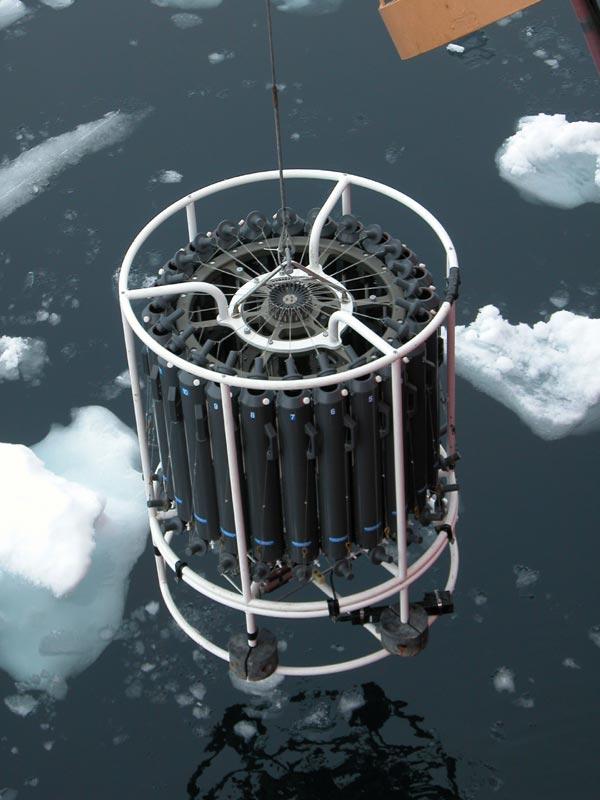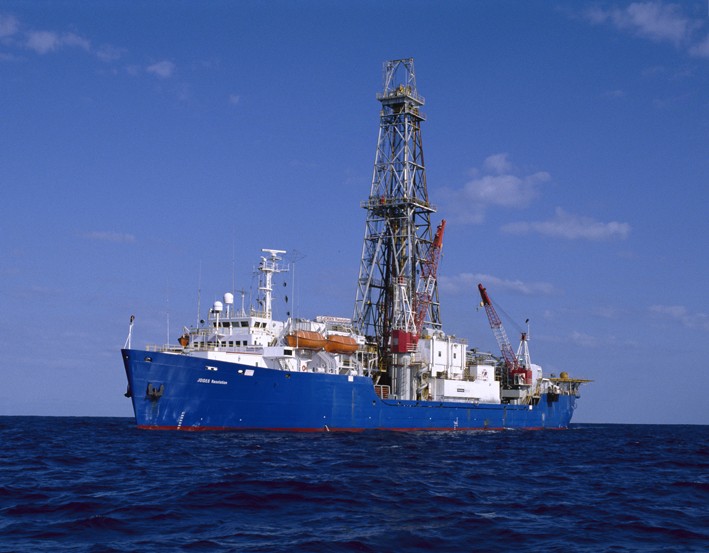Biological Oceanographers study living organisms in the ocean including plant (flora), animals (fauna), and environmental aspects of life in the ocean. Similarly, Biological Oceanographers' work also includes, but is not limited to, developing ecologically sound methods of harvesting seafood and studying biological responses to pollution. Instruments Biological Oceanographers use, but are not limited to, include the plankton net, which are nets with a bottle at the end of the net to help concentrate plankton and other organisms to make it easier to study them under a microscope, which is also an instruments Biological Oceanographers use.
 Plankton Net
Plankton Net  Microscope
MicroscopeChemical Oceanographers study the chemical composition of water, the chemical reactions that occur both in the ocean and the sea floor, and the temperature of the water. Also, their work includes the analysis of seawater components, desalination of seawater, and studying the effects of pollutants. Chemical Oceanographers often work together with Biological Oceanographers on studies of living systems. Instruments used include thermometers, CTD, and Nansen Bottle. The CTD fills with water to sample the chemical components. The Nansen Bottle is similar to the CTD in that it also fills with water to be sampled.
 CTD
CTD  Nansen Bottle
Nansen BottlePhysical Oceanographers study the winds, waves, tides, and the affect on the ocean, the changes and motions of sea water, hurricanes, tsunamis, etc. Similarly, Physical Oceanographers also study the ocean-atmosphere relationship that influences weather and climate, the transmission of light and sound through water, and the ocean’s interactions with its boundaries at the sea floor and the coast Instruments include drifter, FLIP, which stands for Floating Instrument Platform, and current meters. FLIP is a ship that is shaped like a baseball bat and is 355 feet long. Each compartment of the elongated structure fill with water, causing the ship to become vertical, thus enabling it to be able to study the ocean's waves without being as influenced by waves as much as traditional ships are.
 FLIP
FLIP Geological Oceanographers study the physical features on the ocean floor, bathymetric maps, volcanoes, and hydrothermal vents. Studies of the physical and chemical properties of rocks and sediments give us valuable information about Earth’s history. The results of their work help people understand the processes that created the ocean basins and the interactions between the ocean and the sea floor. Instruments used to gather all this information include dredge, push core sampler, and bathymetric maps. Bathymetric maps are designed to show the different depths of the ocean in different areas by outlining the regions of varying depths as shown below.
 Bathymetric map
Bathymetric mapGeophysical Oceanographers study features below the ocean floor, look for oil and gas deposits, and search for fossil fuels beneath the ocean floor. Geophysical Oceanographers employ the principles of physics, mathematics, and chemistry to study the Earth’s surface and also its internal composition; ground and surface waters; atmosphere; oceans; and its magnetic, electrical, and gravitational forces. The instruments used include oil rigs and drilling ships. Drilling ships are used to obtain fossil fuels such as oil from deposits under the ocean floor for profit.
 Drilling Ship
Drilling Ship Oceanographic Engineers develop technology for oceanographic research and development, and oceanographic equipment like oil rigs and FLIP. Instruments used by Oceanographic Engineers include models and computers.
Marine Policy Specialists combine their knowledge of oceanography and social sciences, law, and/or business to develop guidelines and policies for the wise use of the ocean and coastal resources. Marine policy requires a knowledge of a sound understanding of oceanographic issues.

-Victoria Mehlhaff-
Hey, I am Ruma, a Environmental Sciences student studying in a Liberal Arts university in Bangladesh. It is an international university. In this semester we are studying Oceanography and I like this course very much. I want to do a masters on oceanography, but I dont know which one to choose since there must be myriads of branches of oceanography. And I am very much keen to study abroad. Can you please give me some ideas in such cases? I meant, which course I can choose and the name of Graduate school in the USA that are specialized in this arena?
ReplyDeleteHey, I am Ruma, a Environmental Sciences student studying in a Liberal Arts university in Bangladesh. It is an international university. In this semester we are studying Oceanography and I like this course very much. I want to do a masters on oceanography, but I dont know which one to choose since there must be myriads of branches of oceanography. And I am very much keen to study abroad. Can you please give me some ideas in such cases? I meant, which course I can choose and the name of Graduate school in the USA that are specialized in this arena?
ReplyDelete